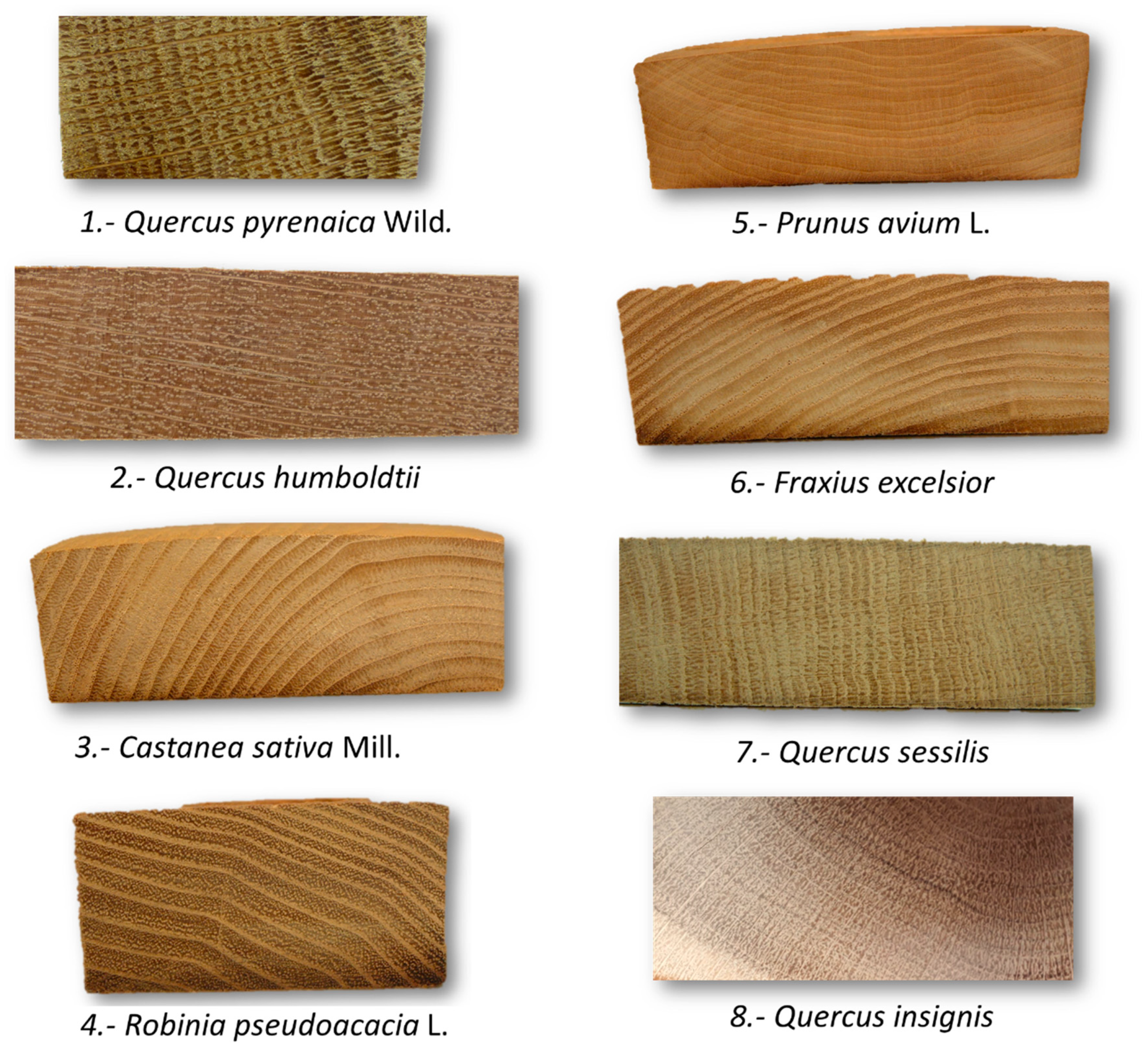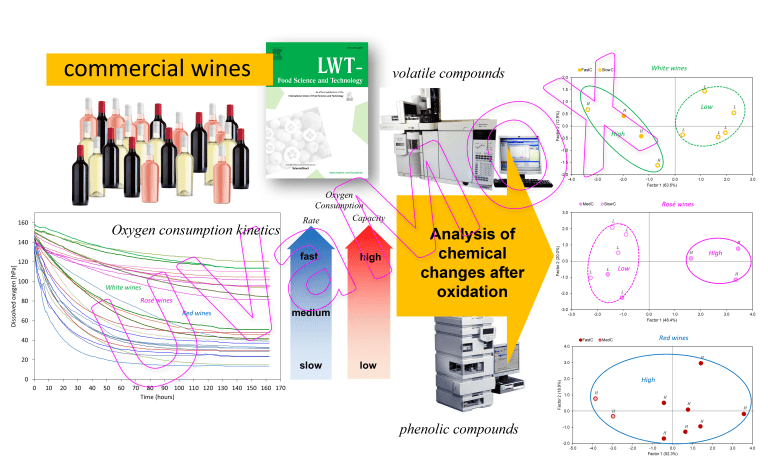Abstract
Contact of wine with wood during fermentation and ageing produces significant changes in its chemical composition and organoleptic properties, modifying its final quality. Wines acquire complex aromas from the wood, improve their colour stability, flavour, and clarification, and extend their storage period. New trends in the use of barrels, replaced after a few years of use, have led to an increased demand for oak wood in cooperage. In addition, the fact that the wine market is becoming increasingly saturated and more competitive means that oenologists are increasingly interested in tasting different types of wood to obtain wines that differ from those already on the market. This growing demand and the search for new opportunities to give wines a special personality has led to the use of woods within the Quercus genus that are different from those used traditionally (Quercus alba, Quercus petraea, and Quercus robur) and even woods of different genera. Thus, species of the genus Quercus, such as Quercus pyrenaica Willd., Quercus faginea Lam., Quercus humboldtti Bonpl., Quercus oocarpa Liebm., Quercus frainetto Ten, and other genera, such as Robinia pseudoacacia L. (false acacia), Castanea sativa Mill. (chestnut), Prunus avium L. and Prunus cereaus L. (cherry), Fraxinus excelsior L. (European ash), Fraxinus americana L. (American ash), Morus nigra L, and Morus alba L. have been the subject of several studies as possible sources of wood apt for cooperage. The chemical characterization of these woods is essential in order to be able to adapt the cooperage treatment and, thus, obtain wood with oenological qualities suitable for the treatment of wines. This review aims to summarize the different species that have been studied as possible new sources of wood for oenology, defining the extractable composition of each one and their use in wine. View Full-Text
Keywords: traditional oaks; different oaks; other woods; ellagitannins; low molecular phenols; volatile compounds




